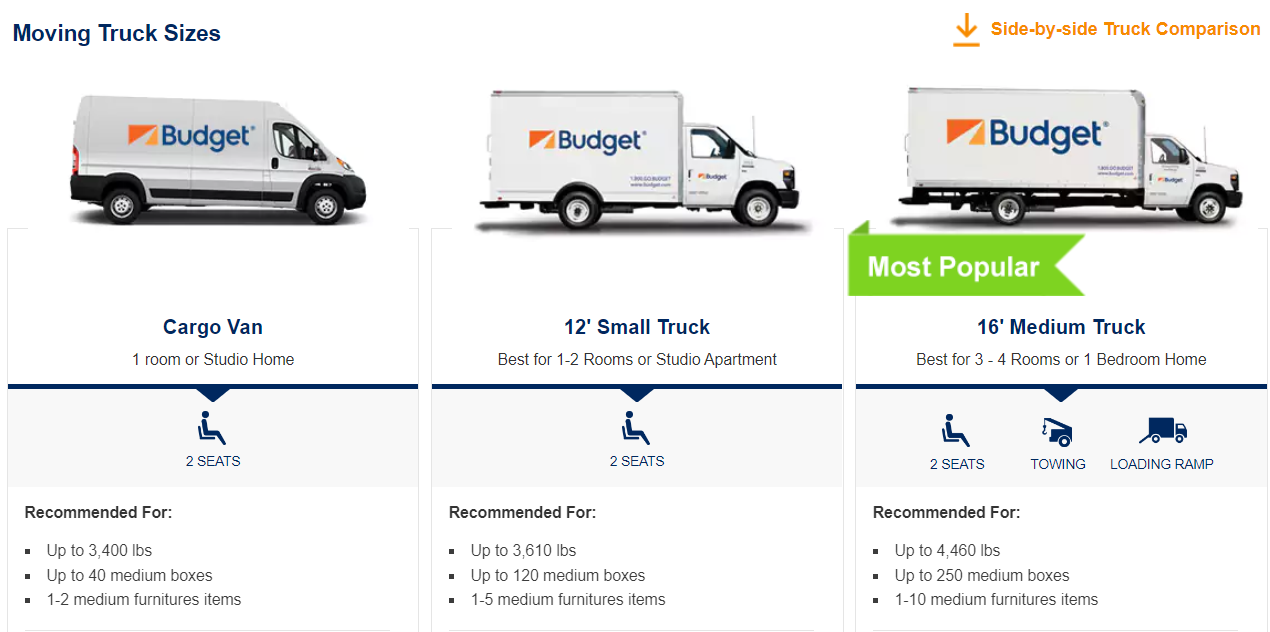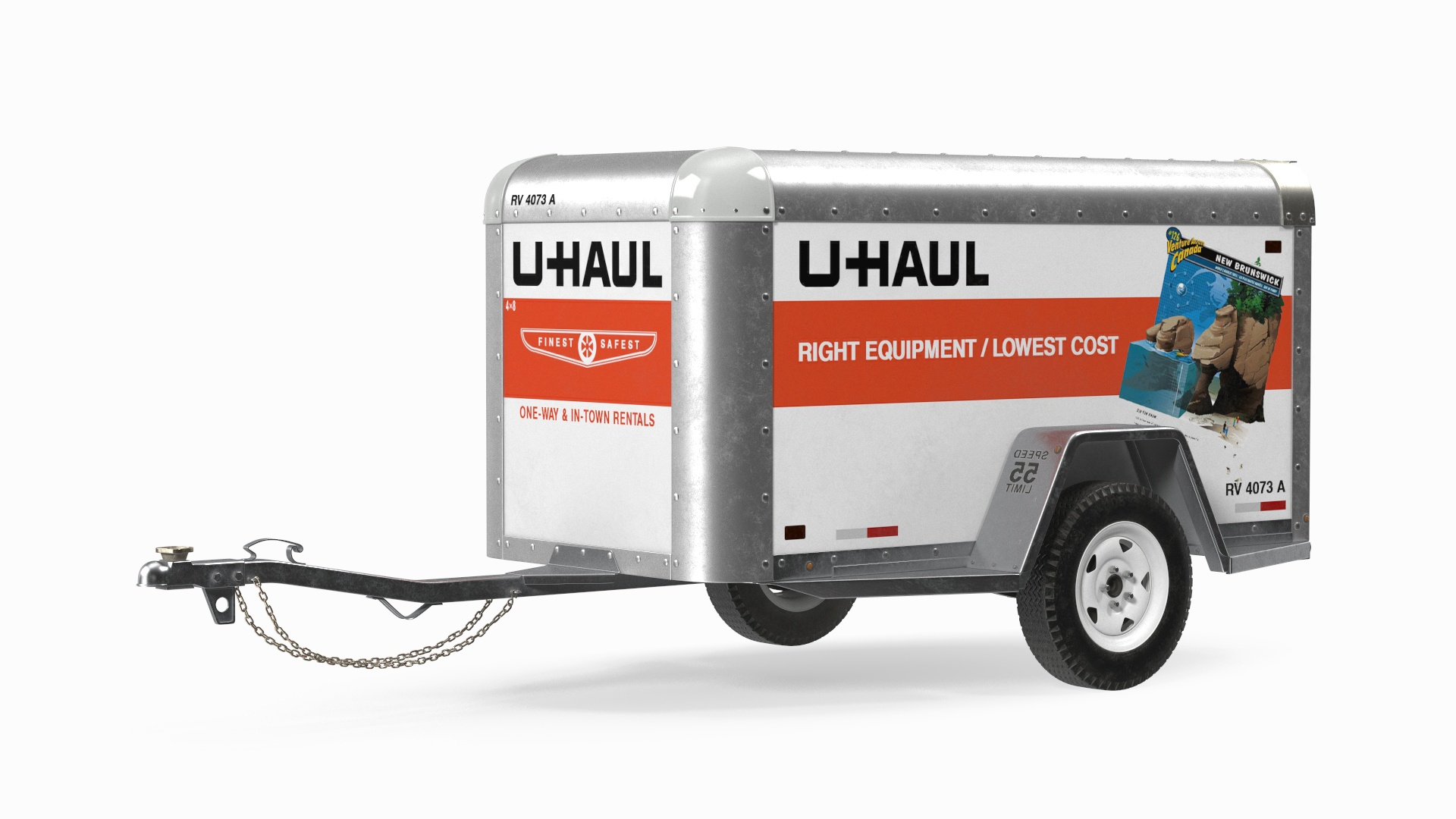U-Haul Trailer Sizes: Your Ultimate Guide to Choosing the Right Towing Solution cars.truckstrend.com
Moving, decluttering, or transporting large items often brings one name to mind: U-Haul. Renowned for its comprehensive range of moving and towing solutions, U-Haul offers an array of trailers designed to meet diverse needs. However, the sheer variety of U-Haul trailer sizes can be daunting. Choosing the right trailer isn’t just about fitting your belongings; it’s crucial for safety, efficiency, and cost-effectiveness. An undersized trailer means multiple trips or a dangerous overload, while an oversized one wastes money and can be challenging to maneuver.
This comprehensive guide will demystify U-Haul trailer sizes, providing detailed insights into each option, practical advice for selection and use, and essential considerations to ensure your next haul is smooth and stress-free.
U-Haul Trailer Sizes: Your Ultimate Guide to Choosing the Right Towing Solution
Understanding U-Haul Trailer Categories
U-Haul broadly categorizes its trailers into three main types, each serving distinct purposes:
- Cargo Trailers (Enclosed): These trailers are fully enclosed, offering protection from weather, road debris, and theft. They are ideal for household goods, furniture, electronics, and anything that needs to stay dry and secure.
- Utility Trailers (Open): Featuring an open top and often a low profile or ramp, utility trailers are perfect for transporting bulky, oddly shaped items that may not fit in an enclosed trailer, such as landscaping equipment, ATVs, building materials, or large appliances.
- Vehicle Transport Trailers: Specifically designed for moving vehicles, this category includes tow dollies (which lift two wheels off the ground) and auto transports (which carry all four wheels of the vehicle on the trailer).

Understanding these categories is the first step in narrowing down your options.
Detailed Breakdown of U-Haul Trailer Sizes and Their Best Uses
Let’s delve into the specifics of each U-Haul trailer size, outlining dimensions, capacity, and ideal applications.
Cargo Trailers (Enclosed)

1. 4’x6′ Cargo Trailer
- Dimensions (Approximate): 6′ L x 4′ W x 3.5′ H (interior); 8′ L x 6′ W (overall)
- Cubic Feet: 80 cu. ft.
- Max Load (Approx.): 1,600 lbs
- Ideal Uses: Perfect for small local moves, college dorm clean-outs, hauling boxes, luggage, or small furniture like a nightstand or small dresser. It’s also great for transporting tools, camping gear, or small hobby equipment.
- Towing Vehicle Requirement: Most cars, SUVs, and trucks can tow this trailer, provided they have a proper hitch and wiring.

2. 5’x8′ Cargo Trailer
- Dimensions (Approximate): 8′ L x 5′ W x 4.5′ H (interior); 11′ L x 7′ W (overall)
- Cubic Feet: 200 cu. ft.
- Max Load (Approx.): 1,800 lbs
- Ideal Uses: Suitable for studio apartments, small one-bedroom apartments, or as an overflow for larger moves. It can accommodate a queen-size bed, dresser, boxes, or several appliances like a washer and dryer. Also popular for small business deliveries or hauling inventory.
- Towing Vehicle Requirement: SUVs, vans, and pickup trucks are generally suitable.
3. 5’x10′ Cargo Trailer
- Dimensions (Approximate): 10′ L x 5′ W x 5.5′ H (interior); 13′ L x 7′ W (overall)
- Cubic Feet: 270 cu. ft.
- Max Load (Approx.): 2,100 lbs
- Ideal Uses: A versatile option for one-bedroom apartments or small two-bedroom homes. It can handle more substantial furniture, such as sofas, dining room sets, and multiple appliances. Its extended length is beneficial for longer items.
- Towing Vehicle Requirement: Typically requires a larger SUV, van, or pickup truck with adequate towing capacity.
4. 6’x12′ Cargo Trailer
- Dimensions (Approximate): 12′ L x 6′ W x 6′ H (interior); 15′ L x 8′ W (overall)
- Cubic Feet: 396 cu. ft.
- Max Load (Approx.): 2,500 lbs
- Ideal Uses: The largest enclosed cargo trailer, perfect for two-bedroom homes, larger apartments, or significant furniture and appliance moves. It can accommodate king-size beds, large sofas, multiple appliances, and a considerable number of boxes. Often used in conjunction with a U-Haul truck for comprehensive moves.
- Towing Vehicle Requirement: A full-size pickup truck or a large SUV with a V8 engine and proper towing package is highly recommended for this size.
Utility Trailers (Open)
1. 4’x7′ Utility Trailer
- Dimensions (Approximate): 7′ L x 4′ W (bed); 10′ L x 6′ W (overall)
- Max Load (Approx.): 1,770 lbs
- Ideal Uses: Great for lawn equipment (mowers, trimmers), landscaping materials (mulch, gravel), or hauling smaller recreational vehicles like dirt bikes. Its low sides and open top make loading easy.
- Towing Vehicle Requirement: Most cars, SUVs, and trucks can handle this trailer.
2. 5’x8′ Utility Trailer
- Dimensions (Approximate): 8′ L x 5′ W (bed); 11′ L x 7′ W (overall)
- Max Load (Approx.): 1,890 lbs
- Ideal Uses: A popular choice for slightly larger lawn tractors, ATVs, motorcycles, or construction debris. It often comes with a low deck and a loading ramp, making it very user-friendly.
- Towing Vehicle Requirement: SUVs, vans, and pickup trucks are suitable.
3. 5’x10′ Utility Trailer
- Dimensions (Approximate): 10′ L x 5′ W (bed); 13′ L x 7′ W (overall)
- Max Load (Approx.): 1,650 lbs
- Ideal Uses: Excellent for transporting longer items like lumber, pipes, canoes/kayaks, or multiple motorcycles. Its length provides flexibility for various projects.
- Towing Vehicle Requirement: Larger SUVs or pickup trucks are recommended.
4. 6’x12′ Utility Trailer
- Dimensions (Approximate): 12′ L x 6′ W (bed); 15′ L x 8′ W (overall)
- Max Load (Approx.): 2,670 lbs
- Ideal Uses: The largest utility trailer, ideal for large landscaping projects, moving substantial construction equipment, or transporting multiple large recreational vehicles. Features a heavy-duty ramp for easy loading.
- Towing Vehicle Requirement: A full-size pickup truck or a heavy-duty SUV is necessary due to its size and potential load capacity.
Vehicle Transport Trailers
1. Tow Dolly
- Dimensions (Approximate): Designed for vehicles with a wheelbase up to 132"
- Max Load (Approx.): 3,450 lbs (towing vehicle front axle weight); 3,900 lbs (towed vehicle weight)
- Ideal Uses: For towing front-wheel-drive vehicles where the drive wheels are lifted off the ground. Economical for short-distance moves or when you don’t need to transport a heavy car.
- Towing Vehicle Requirement: Pickup trucks or full-size SUVs with appropriate towing capacity.
2. Auto Transport
- Dimensions (Approximate): Designed for vehicles with a wheelbase up to 133"
- Max Load (Approx.): 5,290 lbs (towed vehicle weight)
- Ideal Uses: For transporting all types of vehicles (front, rear, or all-wheel drive) over long distances, ensuring all four wheels are off the ground. Provides maximum protection for the towed vehicle.
- Towing Vehicle Requirement: A full-size pickup truck or heavy-duty SUV with a robust towing package is essential for this heavy-duty trailer.
Key Considerations Before Renting Your U-Haul Trailer
Selecting the right trailer goes beyond just size; several critical factors influence safety and efficiency:
- Towing Vehicle Compatibility: This is paramount.
- Hitch Class: Your vehicle must have the correct hitch class (e.g., Class I for smaller trailers, Class III or IV for larger ones).
- Towing Capacity: Never exceed your vehicle’s stated towing capacity. This includes the weight of the trailer itself (empty) plus its entire contents.
- Electrical Connector: Ensure your vehicle has a functional 4-pin or 7-pin electrical connector for trailer lights and, if applicable, brakes.
- Transmission Cooler: Highly recommended for towing, especially over long distances or in hilly terrain, to prevent transmission overheating.
- Brake Controller: While most U-Haul trailers use surge brakes (which activate automatically when the tow vehicle slows down), a dedicated brake controller might be needed for very heavy loads or certain vehicle setups.
- Weight Distribution: Proper loading is crucial. Approximately 60% of the cargo weight should be in the front half of the trailer, closer to the hitch, and centered side-to-side. Improper weight distribution can lead to dangerous trailer sway.
- Safety Features: All U-Haul trailers come with safety chains and proper lighting. Familiarize yourself with their operation.
- Route Planning: Consider your route’s terrain (steep hills?), road conditions, and any low overhead clearances. Plan for more frequent fuel stops.
- Insurance: U-Haul offers supplementary coverage like "Safemove" (for cargo trailers) and "Safetow" (for vehicle transport). These can protect you from financial liability in case of damage to the trailer or your belongings. Review these options carefully.
- One-Way vs. In-Town Rental: One-way rentals allow you to pick up in one location and drop off in another, but they are typically more expensive and prices fluctuate based on demand and availability. In-town rentals are generally cheaper but require returning the trailer to the original pickup location.
Practical Tips for a Smooth Trailer Rental Experience
- Book in Advance: Especially during peak moving seasons (end of month, summer, holidays), U-Haul trailers are in high demand. Booking early ensures you get the size you need.
- Perform a Pre-Rental Inspection: Before leaving the U-Haul lot, thoroughly inspect the trailer. Check tire pressure, lights (turn signals, brake lights), and the integrity of the hitch connection.
- Master Loading Techniques:
- Place heavier items on the bottom and towards the front of the trailer.
- Distribute weight evenly from side to side.
- Secure all items using ropes, tie-downs, or moving blankets to prevent shifting during transit.
- Do not overload the trailer beyond its stated maximum weight capacity.
- Practice Driving with a Trailer: If you’re new to towing, practice in an empty parking lot. Get a feel for wider turns, increased stopping distances, and backing up.
- Adjust Your Driving Habits:
- Slower Speeds: Drive slower than usual, especially on highways and winding roads.
- Wider Turns: Account for the trailer’s length and swing radius, especially when turning right.
- Increased Stopping Distance: You’ll need significantly more distance to stop safely.
- Check Mirrors Frequently: Be aware of your trailer’s position and surrounding traffic.
- Return the Trailer Properly: Ensure it’s clean, all personal items are removed, and return it on time to avoid late fees.
Potential Challenges and Solutions
- Towing Capacity Issues:
- Challenge: Your vehicle’s towing capacity is insufficient for the desired trailer and load.
- Solution: Downsize your trailer, lighten your load, or consider renting a U-Haul truck that can tow the trailer or accommodate your entire move.
- Overloading:
- Challenge: Exceeding the trailer’s weight limit. This compromises braking, handling, and can damage your vehicle or the trailer.
- Solution: Weigh your items beforehand if possible, or err on the side of caution. If unsure, split the load into multiple trips or opt for a larger trailer.
- Hitching Difficulties:
- Challenge: Difficulty connecting the trailer to your hitch.
- Solution: Ask for assistance from U-Haul staff. Use a spotter when backing up to the trailer. Ensure the ball mount and hitch ball size match the trailer’s coupler.
- Bad Weather:
- Challenge: High winds, heavy rain, or snow can make towing dangerous.
- Solution: Postpone your trip if possible. If you must drive, reduce speed significantly, increase following distance, and be extra vigilant. High winds can cause trailer sway.
- Trailer Sway:
- Challenge: The trailer sways from side to side, often caused by improper weight distribution, high speeds, or strong crosswinds.
- Solution: Immediately take your foot off the gas (do not brake sharply), keep the steering wheel straight, and if equipped, gently activate the trailer brakes. Once stable, pull over and redistribute the load.
U-Haul Trailer Sizes and Approximate Pricing
Please note: Prices are highly variable based on location, availability, demand, rental duration (daily vs. one-way), and time of year. The "Approx. Daily Rate (In-Town)" is for short-term local use, while "Approx. One-Way Rate" can be significantly higher and is calculated based on distance and route. Always check current pricing directly on the U-Haul website or at a local dealer for an accurate quote.
| Trailer Type | Dimensions (Approx.) | Max Load (lbs) | Approx. Daily Rate (In-Town) | Approx. One-Way Rate (Variable) |
|---|---|---|---|---|
| Cargo Trailers | ||||
| 4’x6′ Enclosed | 6’L x 4’W x 3.5’H (int.) | 1,600 | $14.95 – $19.95 | Varies (e.g., $80 – $200+) |
| 5’x8′ Enclosed | 8’L x 5’W x 4.5’H (int.) | 1,800 | $24.95 – $29.95 | Varies (e.g., $100 – $300+) |
| 5’x10′ Enclosed | 10’L x 5’W x 5.5’H (int.) | 2,100 | $34.95 – $39.95 | Varies (e.g., $150 – $400+) |
| 6’x12′ Enclosed | 12’L x 6’W x 6’H (int.) | 2,500 | $39.95 – $49.95 | Varies (e.g., $200 – $600+) |
| Utility Trailers | ||||
| 4’x7′ Open | 7’L x 4’W (bed) | 1,770 | $14.95 – $19.95 | Varies (e.g., $70 – $180+) |
| 5’x8′ Open | 8’L x 5’W (bed) | 1,890 | $24.95 – $29.95 | Varies (e.g., $90 – $250+) |
| 5’x10′ Open | 10’L x 5’W (bed) | 1,650 | $29.95 – $34.95 | Varies (e.g., $120 – $350+) |
| 6’x12′ Open | 12’L x 6’W (bed) | 2,670 | $34.95 – $44.95 | Varies (e.g., $150 – $450+) |
| Vehicle Transport | ||||
| Tow Dolly | For up to 3,900 lbs vehicle | 3,900 | $44.95 – $54.95 | Varies (e.g., $150 – $500+) |
| Auto Transport | For up to 5,290 lbs vehicle | 5,290 | $54.95 – $69.95 | Varies (e.g., $200 – $700+) |
Frequently Asked Questions (FAQ)
Q: Do I need a special license to tow a U-Haul trailer?
A: In most U.S. states and Canadian provinces, a standard driver’s license (Class D or G) is sufficient for towing U-Haul trailers for personal use, as their combined weight (trailer + load) usually falls below the threshold requiring a Commercial Driver’s License (CDL). However, always check your local Department of Motor Vehicles (DMV) or equivalent for specific regulations in your area.
Q: Can I tow a U-Haul trailer with an SUV?
A: Yes, many SUVs are capable of towing smaller and medium-sized U-Haul trailers (like the 4’x6′ or 5’x8′ cargo trailers, or even a tow dolly). However, it’s crucial to check your specific SUV’s towing capacity in its owner’s manual. For larger trailers (6’x12′ cargo or auto transport), a full-size SUV or a pickup truck is generally required.
Q: What’s the difference between a tow dolly and an auto transport?
A: A tow dolly lifts only two wheels of the towed vehicle (usually the drive wheels) off the ground, leaving the other two on the road. It’s lighter and often cheaper for shorter distances. An auto transport is a full trailer that lifts all four wheels of the towed vehicle completely off the ground, providing maximum protection and making it suitable for longer distances or vehicles that cannot be dolly-towed (e.g., AWD vehicles).
Q: How do I know if my vehicle can tow a specific trailer?
A: Check your vehicle’s owner’s manual for its maximum towing capacity. This figure must exceed the Gross Vehicle Weight Rating (GVWR) of the loaded trailer you intend to rent. Also, ensure your vehicle has the correct hitch class and electrical hookup. U-Haul’s website has a helpful "Towing Capacity" tool where you can input your vehicle details to see compatible trailers.
Q: Are U-Haul trailers equipped with brakes?
A: Yes, most U-Haul trailers are equipped with surge brakes. These are hydraulic brakes that activate automatically when the tow vehicle slows down, applying pressure to the trailer’s brakes. This system does not require a separate brake controller in your tow vehicle.
Q: What if I don’t have a hitch on my vehicle?
A: U-Haul also sells and installs hitches and wiring harnesses. You can have one installed at a U-Haul service center before renting a trailer. Alternatively, you might need to rent a U-Haul moving truck, which comes with a built-in hitch.
Q: Can I pick up and drop off a trailer at different locations?
A: Yes, U-Haul offers one-way trailer rentals, allowing you to pick up a trailer at one location and drop it off at another U-Haul facility. This is very convenient for long-distance moves but typically comes with a higher rental cost compared to in-town rentals where you return the trailer to the original pickup location.
Conclusion
Navigating the world of U-Haul trailer sizes doesn’t have to be complicated. By understanding the different categories, their specific dimensions and capacities, and the critical considerations for safe towing, you can confidently select the perfect trailer for your needs. Remember to always prioritize safety by ensuring your towing vehicle is compatible, loading the trailer correctly, and practicing defensive driving. With careful planning and attention to detail, your U-Haul trailer rental experience will be efficient, secure, and contribute to a successful move or haul.

